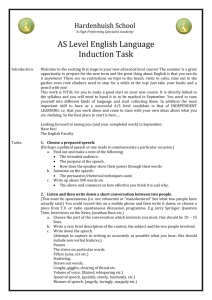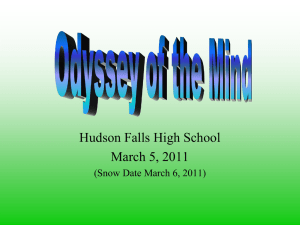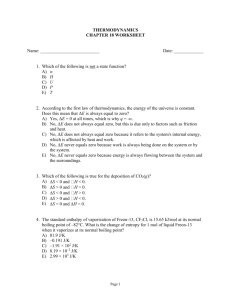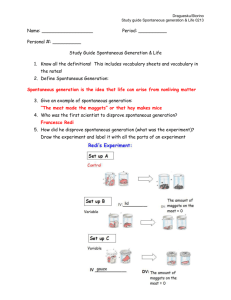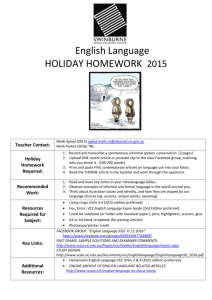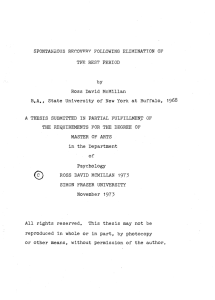Receptive/expressive social hierarchy
advertisement
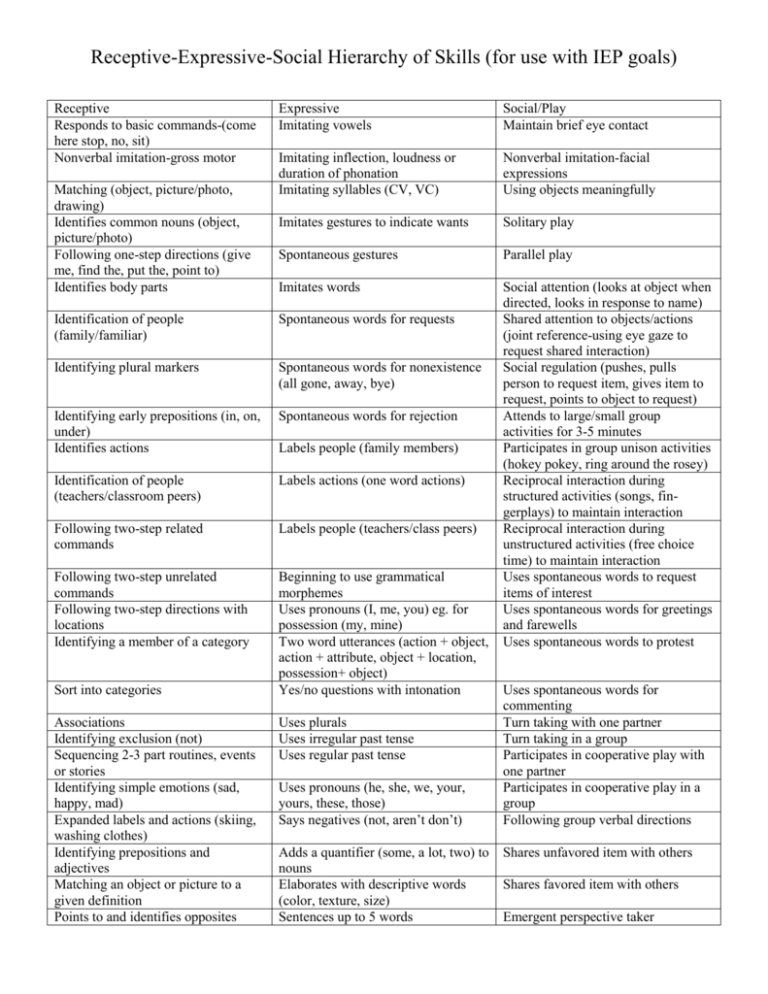
Receptive-Expressive-Social Hierarchy of Skills (for use with IEP goals) Receptive Responds to basic commands-(come here stop, no, sit) Nonverbal imitation-gross motor Matching (object, picture/photo, drawing) Identifies common nouns (object, picture/photo) Following one-step directions (give me, find the, put the, point to) Identifies body parts Expressive Imitating vowels Social/Play Maintain brief eye contact Imitating inflection, loudness or duration of phonation Imitating syllables (CV, VC) Nonverbal imitation-facial expressions Using objects meaningfully Imitates gestures to indicate wants Solitary play Spontaneous gestures Parallel play Imitates words Social attention (looks at object when directed, looks in response to name) Shared attention to objects/actions (joint reference-using eye gaze to request shared interaction) Social regulation (pushes, pulls person to request item, gives item to request, points to object to request) Attends to large/small group activities for 3-5 minutes Participates in group unison activities (hokey pokey, ring around the rosey) Reciprocal interaction during structured activities (songs, fingerplays) to maintain interaction Reciprocal interaction during unstructured activities (free choice time) to maintain interaction Uses spontaneous words to request items of interest Uses spontaneous words for greetings and farewells Uses spontaneous words to protest Identification of people (family/familiar) Spontaneous words for requests Identifying plural markers Spontaneous words for nonexistence (all gone, away, bye) Identifying early prepositions (in, on, under) Identifies actions Spontaneous words for rejection Identification of people (teachers/classroom peers) Labels actions (one word actions) Following two-step related commands Labels people (teachers/class peers) Following two-step unrelated commands Following two-step directions with locations Identifying a member of a category Beginning to use grammatical morphemes Uses pronouns (I, me, you) eg. for possession (my, mine) Two word utterances (action + object, action + attribute, object + location, possession+ object) Yes/no questions with intonation Sort into categories Associations Identifying exclusion (not) Sequencing 2-3 part routines, events or stories Identifying simple emotions (sad, happy, mad) Expanded labels and actions (skiing, washing clothes) Identifying prepositions and adjectives Matching an object or picture to a given definition Points to and identifies opposites Labels people (family members) Uses plurals Uses irregular past tense Uses regular past tense Uses pronouns (he, she, we, your, yours, these, those) Says negatives (not, aren’t don’t) Adds a quantifier (some, a lot, two) to nouns Elaborates with descriptive words (color, texture, size) Sentences up to 5 words Uses spontaneous words for commenting Turn taking with one partner Turn taking in a group Participates in cooperative play with one partner Participates in cooperative play in a group Following group verbal directions Shares unfavored item with others Shares favored item with others Emergent perspective taker Receptive-Expressive-Social Hierarchy of Skills (for use with IEP goals) Chooses objects described as a synonym pair Points to singular and plural objects as they are named Locates and points to possessive nouns desired Begins saying copula and auxiliary verbs Uses articles appropriately Demonstrates understanding of various pronouns by choosing objects or pictures Chooses objects or pictures desired with a sentence containing the word not Points to a picture which answers a stated “WH” question Uses regular 3rd person singular verbs Describes pictures using prepositions Initiates conversation by gaining person’s attention/calling name Initiates conversation with a routine script Maintains conversation by sharing information and sharing feedback (saying “I know”, “uhuh”) Maintains conversation by using appropriate topics Talks about future events Can terminate a conversation appropriately Expresses facts, rules, beliefs, attitudes, and emotions Asks questions by inverting word order (is he…?) Produces primitive tag questions (I’m going, okay?) Conjoins clauses, usually with “and” Describes current events Answers simple "yes/no" questions Answers who, what, where questions Answers when, how, why questions Beginning to use antonyms Beginning to use synonyms Names categories Names items in a category Retells a story or talk about an event Gives directions Uses oral language to inform, to persuade, and to entertain Explains what has been learned Uses language effectively for a variety of purposes Gives accurate directions to others Summarizes and restates ideas Describes past/future events Uses polite markers Attempts communication repair during conversation (eg. Asking clarifying questions) Uses appropriate vocal volume/appropriate inflection Defines relationship/role of others in their environment
